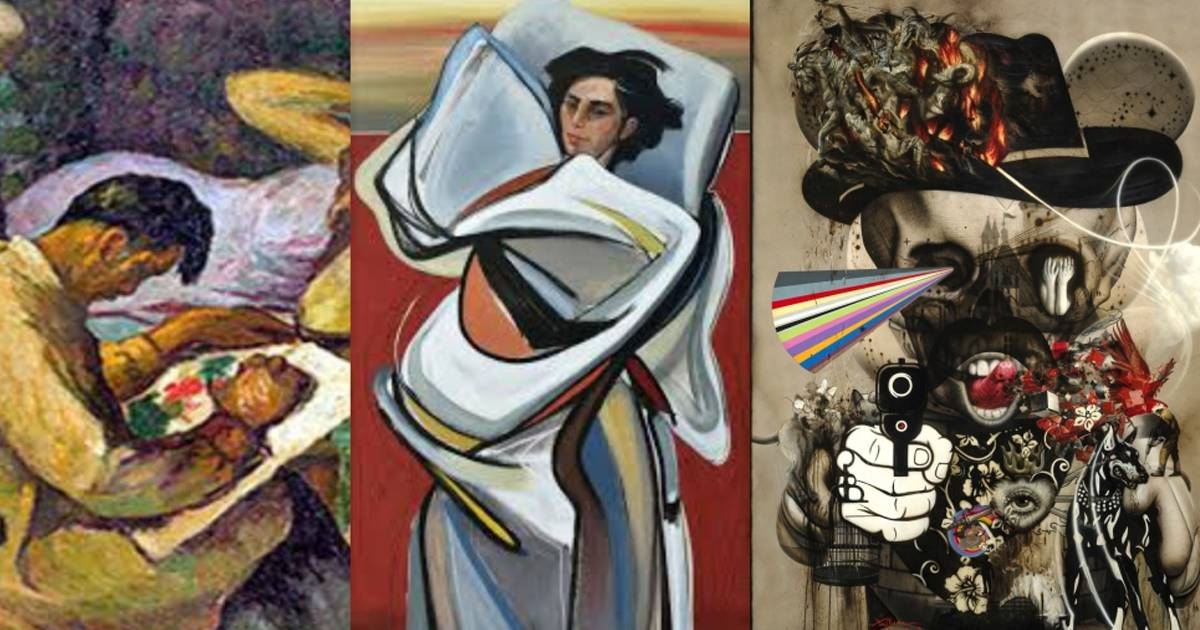Are there differences between modern and contemporary art? Many artists of this generation perceive that abstract or cubist works are often labeled modernist, while others consider such creators contemporary artists. This raises the question of whether a clear distinction exists between the two.
The terms “modern” and “contemporary” are not interchangeable. Their distinction lies primarily in the approximate date ranges established by art historians, critics, curators, and institutions. They recognized a significant shift that marked the end of modernism and the beginning of the contemporary era.
Modern art was created roughly between the 1860s — with some sources suggesting the 1880s — and the late 1960s, though some sources suggest a narrower range ending in the 1950s. Art produced after this period — including movements such as conceptual, minimalist, postmodern, feminist art, and Surrealism — falls within the ongoing narrative of contemporary art.
In the Philippine context, modern art emerged under the influence of Western styles during the late 19th to mid-20th century. Contemporary Philippine art, from the mid-20th century to the present, is distinguished by its diversity, experimentation and exploration of themes such as socio-political issues and cultural identity.
Victorio Edades (1895 to 1985) is regarded as the “father of Modern Philippine art” for introducing modernism to the Philippines in the 1920s. His exposure to modern art in the United States, particularly during his studies at the University of Washington, significantly influenced his work. In 1928, Edades held a solo exhibition at the Philippine Columbian Club, which marked a pivotal moment in his career. He was named a National Artist in 1976.
Notable works by Edades include “The Sketch” (1928), housed in the National Museum Collection, which portrays an artist sketching a reclining woman under the observation of a teacher. Another is “The Builders” (1928), part of the Cultural Center of the Philippines Collection, exemplifying Edades’ modernist approach. Other significant pieces include “Poinsettia Girl,” which achieved a record-breaking sale of $440,158 at auction; “Interaction” (1935), a collaborative effort with Carlos Francisco and Galo Ocampo; and “Kasaysayan” (1979), a mural commissioned for a bank in Manila.
The influence of Edades extended through the Triumvirate he formed with Francisco and Ocampo, and further to the Thirteen Moderns. This group included artists Vicente Manansala, Cesar Legaspi, Romeo Tabuena, Anita Magsaysay-Ho, Hernando R., Arsenio Capili, Demetrio Diego, Bonifacio Cristobal, Carlos ‘Botong’ Francisco, Cesar Legaspi, Diosdado Lorenzo, Jose Pardo, Vicente Manansala, and Ricarte Puruganan.
In the contemporary Filipino art scene, a group of exceptionally dedicated individuals is committed to achieving transcendent beauty. Their unwavering passion for their craft inspires many. For the artists, this means expressing profound emotions through their chosen mediums. For collectors, it’s about creating a unique personal world. Curators elevate the discourse surrounding art, while gallerists have learned how to own and promote it. Iconoclasts, on the other hand, embody the ability to do it all.
Benedicto ‘BenCab’ Cabrera rose to prominence as an artist of exceptional caliber, and his influence continues to thrive. His enduring legacy is a testament to his significant impact on Filipino art and inspires countless others.
Growing up in Malabon, BenCab was exposed to various social issues that found their way into his art. This awareness has remained with him, even as life has taken him worldwide.
Upon his return to the Philippines, he settled in Baguio, where he opened his namesake museum and continues to reside. He has been called many titles throughout his career, including ‘the bestselling painter of his generation.’
Still, his most lasting legacy lies in how his art provides unique insights into the soul of the Filipino people, fostering a sense of connection and introspection among art enthusiasts.
Any discussion of contemporary Philippine art would be incomplete without mentioning Ronald Ventura. Already a legend in his own right, Ventura is celebrated in his home country and beyond. His works, often characterized by a fusion of fantasy and realism, sell for significant sums and continue to captivate collectors worldwide. Recently turning 50, Ventura’s evolving perspectives and sensibilities promise many more intriguing works in the future.
Andres Barrioquinto is another figure whose vibrant, transfixing works have gained acclaim both at home and abroad. With exhibitions in major art capitals like Japan, Singapore, and the United States, Barrioquinto’s contributions highlight the global resonance of Filipino artistry.

